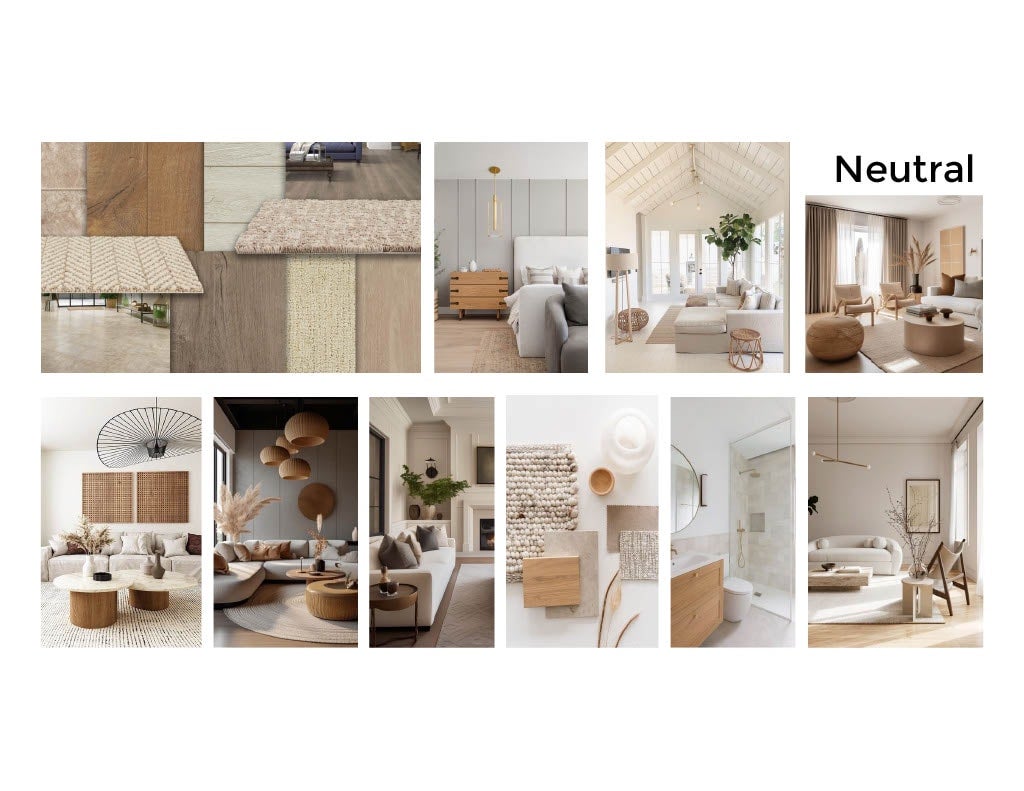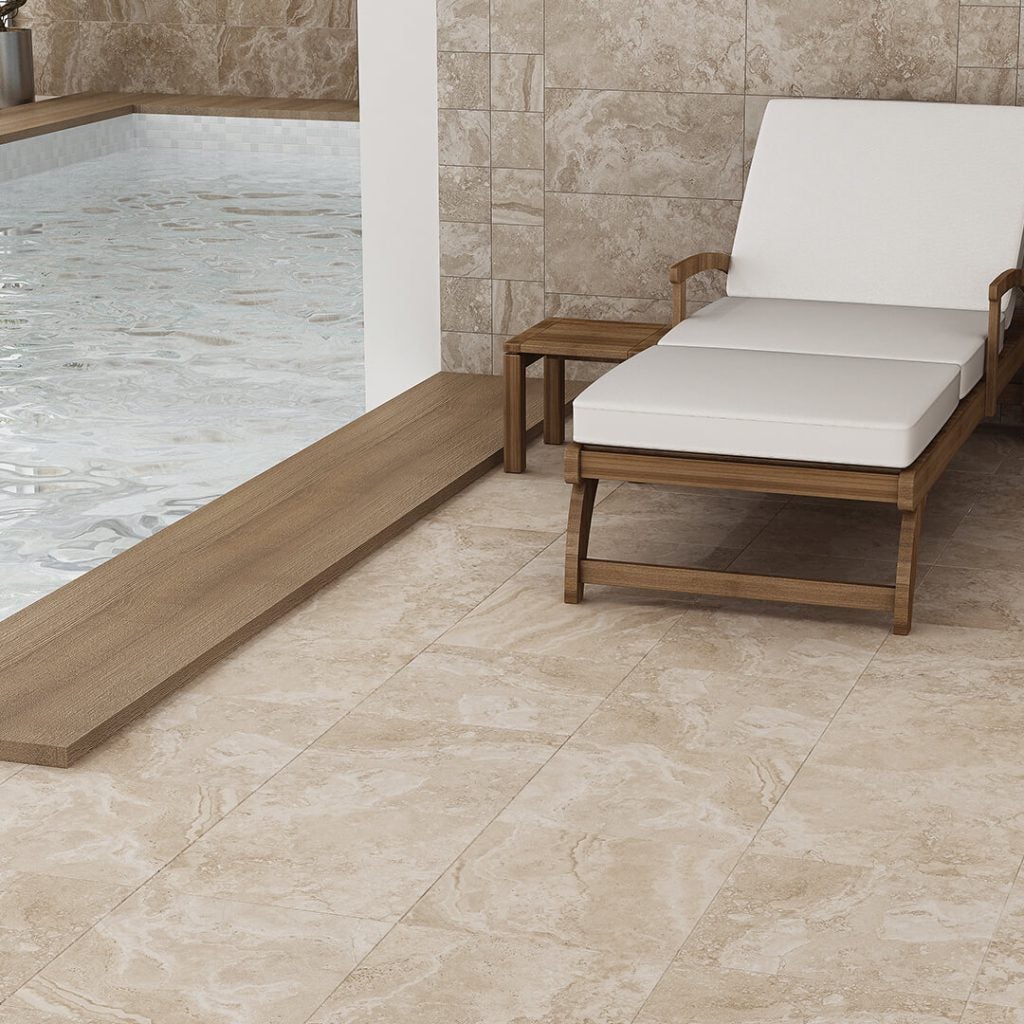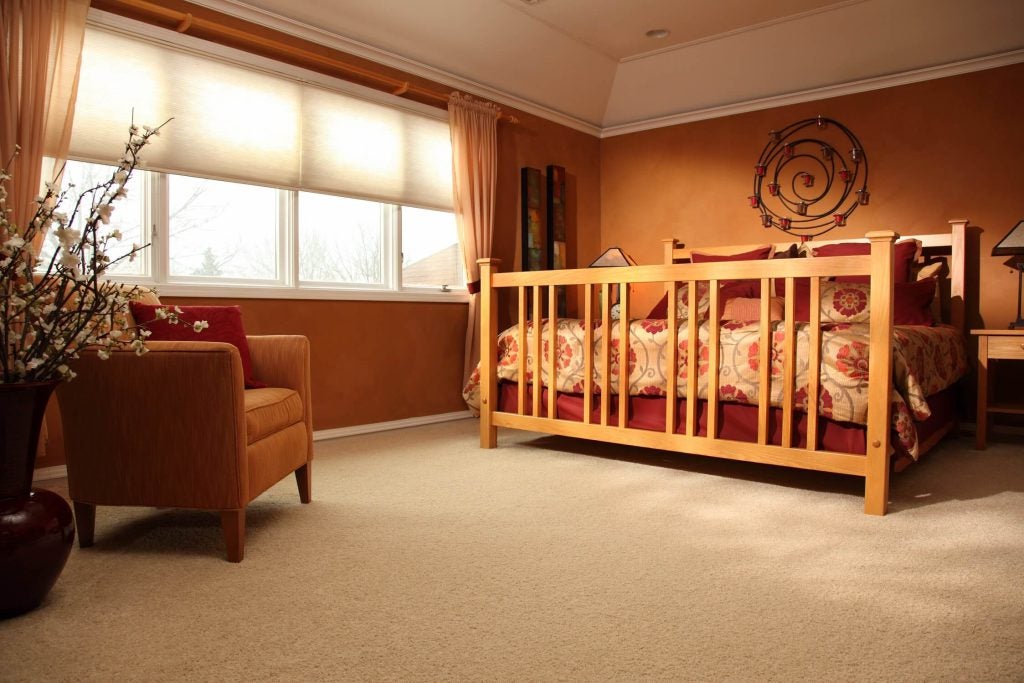Neutral is a broad term that gets thrown around often when discussing style, especially in matters of the home. While it’s often taken to mean something completely lacking color or character, in interior design that’s not entirely true—the term is a little more nuanced. In design circles, it’s more accurate to think of a neutral home decor element as a particular visual component that might lack strong character.
Instead of calling attention to itself with bold colors or strong patterns, neutral elements function better as supporting components of a cohesive design scheme. In the big picture, a neutral element’s lack of strong character actually becomes its strength.

As mentioned above, elements that lend something to an overall aesthetic without commanding a viewer’s attention are usually considered to be neutral in their design. Neutral elements, whether walls, floors, or furnishings will typically lack color. Choices like beige carpet or gray walls, for instance, are good examples of neutral décor.
However, a design piece can have some color and still be considered neutral. Close inspection of a cream-colored wall may reveal slight traces of yellow or green, while a neutral hardwood floor may tend ever so slightly towards a red or orange tinge. These latent hues are known as undertones and can help you build a cohesive look by utilizing color theory to match your floors to your walls and the other major design elements in your home.
Of all common home renovation or redecoration projects, new flooring is typically the one you expect to get the longest life out of. Walls can get regularly repainted without too much stress, and you’ll likely replace major furnishings and appliances at least once in the time you own your home. But new flooring can last generations when properly cared for. As a result, it will usually be the one constant factor with which all other design components will need to mesh. Plus, it’s often the one element that spans multiple rooms—or even the entire house. That means your flooring is often both the literal and figurative foundation of your home’s aesthetic. And we’d say that makes it pretty important when you are trying to build a cohesive look.
Your floor’s enduring, all-encompassing presence in your home makes a case for choosing a look that’s most likely to mesh well with a variety of furnishings, wall colors, and other design elements. And this is where neutral flooring becomes your best friend.
While neutral flooring might not have a strong character of its own, it excels by letting the character of the surrounding design speak for itself. A smartly chosen neutral floor will help highlight your strongest design elements instead of competing with them. And it will be to do so while still looking good on its own—remember, neutral doesn’t mean completely devoid of flavor.

Homeowners have never had it better when it comes to shopping for home improvement products. That’s true for flooring, and especially for neutral flooring products. Years ago, a shopper who knew they wanted the look of a light-toned wood floor would be able to pick from—you guessed it—a handful of light-toned genuine hardwood products. Today, that neutral wood look can be replicated in engineered hardwood, laminate wood flooring, luxury vinyl plank flooring, and even porcelain or ceramic tile. They all present an almost identical aesthetic, but each offers something a little different when it comes to comfort, durability, affordability, and ease of cleanup.
As we mentioned in the opening, being neutral doesn’t automatically mean that a particular element is simple, completely devoid of character, or even easy to choose. Picking an effective neutral floor can be just as difficult as choosing a flooring with a very bold design.
Here are some of our favorite neutral flooring options:
Gray, tan, or cream plush carpet
Plush carpet is generally considered to be the most neutral of all carpet types, as far as physical characteristics go. With its cut-pile construction and perfectly uniform surface, it’s not as casual as a frieze or Berber carpet. But that same uniformity also keeps rooms from feeling as fancy as they often do with pattern carpet.
Opt for a light gray, tan, or other neutral hue, and a room can easily adapt to your changing design goals as the years pass. Neutral-toned plush carpet is often the best choice for rooms where you know you’ll always prioritize comfort, but whose main purpose will evolve. This is a solid strategy for a room that may, for instance, spend a few years as a home office, then become the first baby’s nursery, then a toddler-age bedroom, and so on.
White tile floors are a go-to for any of the home’s major “wet rooms,” including the kitchen and the bathroom. It’s a good idea to choose relatively neutral flooring in both of these rooms for a couple of reasons. First, they’re the two rooms whose floors you’ll want to keep the cleanest, and light, neutral flooring helps make that easier to do so.
Additionally, these two rooms are also among the most common targets for home renovation projects. With ceramic and porcelain tile floors being such long-lasting surfaces, they often don’t need to be replaced even in an otherwise complete room revamp. This is especially true when you’ve chosen a neutral tile style, which is much less likely to clash with whatever new look the room gets during its next makeover.
Hardwood has long been a neutral flooring stalwart. It’s similar to a really nice pair of jeans in that it has rarely gone out of style and can be dressed up or down depending on the other components of the overall ensemble. Neutral hardwood floors will highlight the wood’s natural look instead of hiding it behind a strong stain color. Think of shades like honey, hickory, or white oak.
Grey wood flooring has become one of the more popular shades in recent years. And though it’s not a natural wood color, it’s still a pretty safe long-term because of its neutrality. Trends come and go, but because grey wood is neutral, it’s less likely to stick out in the future even if a particular room built around the grey wood trend gets a full makeover.
So far, neutral flooring sounds like the perfect option for nearly every home, right? But there’s gotta be a downside…right? Like most neutral home decor elements, neutral flooring doesn’t necessarily have any inherent disadvantages. But, as great as we think these products can be, we also know they won’t be the best flooring choice for everyone. Because, just like every other subjective choice, personal taste simply cannot be constrained by hard rules. Sure, neutral floors look great in a wide range of design schemes and don’t call much focus on themselves. But for some homeowners, that agreeableness is itself a downside—because they want their flooring to draw focus.
If you’re someone who wants your flooring to be a statement piece itself, you’ll probably want to go bolder. No one says that your floors must play friendly with every other design element in your home. Additionally, there are aesthetics where neutral simply isn’t the best choice; it doesn’t automatically make every scheme look better. Think about the quintessentially dark and moody study, walls covered in deep mahogany bookshelves filled with leather bound tomes, outfitted with an ornate desk and cordovan leather wing chairs. A room like that is deserving of a floor that matches—it’s no place for neutral shades.

Hopefully, this dissection of neutral flooring styles has helped you get a little bit closer to the ideal floors for your next renovation. Even if you already know that your home’s look will lean towards something bolder overall, understanding the basics of neutral home decor can be a benefit to all DIY decorators. As Pablo Picasso famously said: “Learn the rules like a pro, so you can break them like an artist.” A neutral design can be the foundation for limitless creative experimentation.
Of course, we know that all of the eloquent descriptions and alluring photos on the internet simply can’t beat the benefit of seeing and touching a product in person—especially when you’re trying to make a decision that you might be living with for decades to come. And that’s where the Empire Today® In-Home Experience comes in. It’s just one of the many advantages that come with choosing Empire® for your new flooring installation. We bring hundreds of flooring samples directly to you, giving you the ability to see exactly how they’ll look in the very spot where they’ll end up being installed.
Get the latest updates delivered to your inbox.